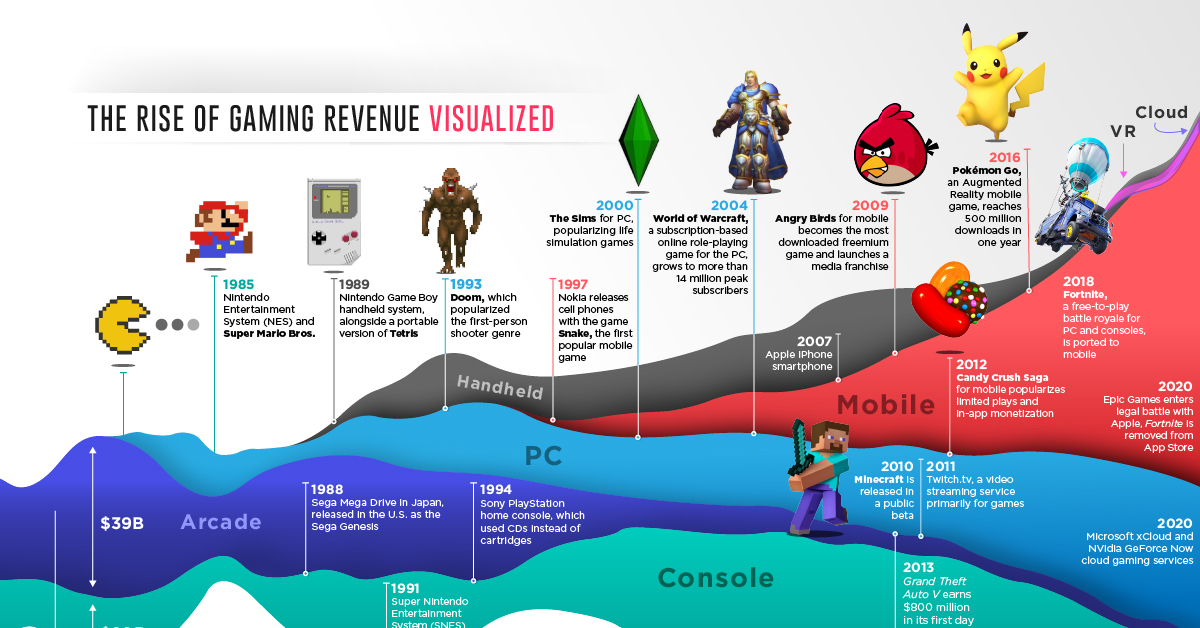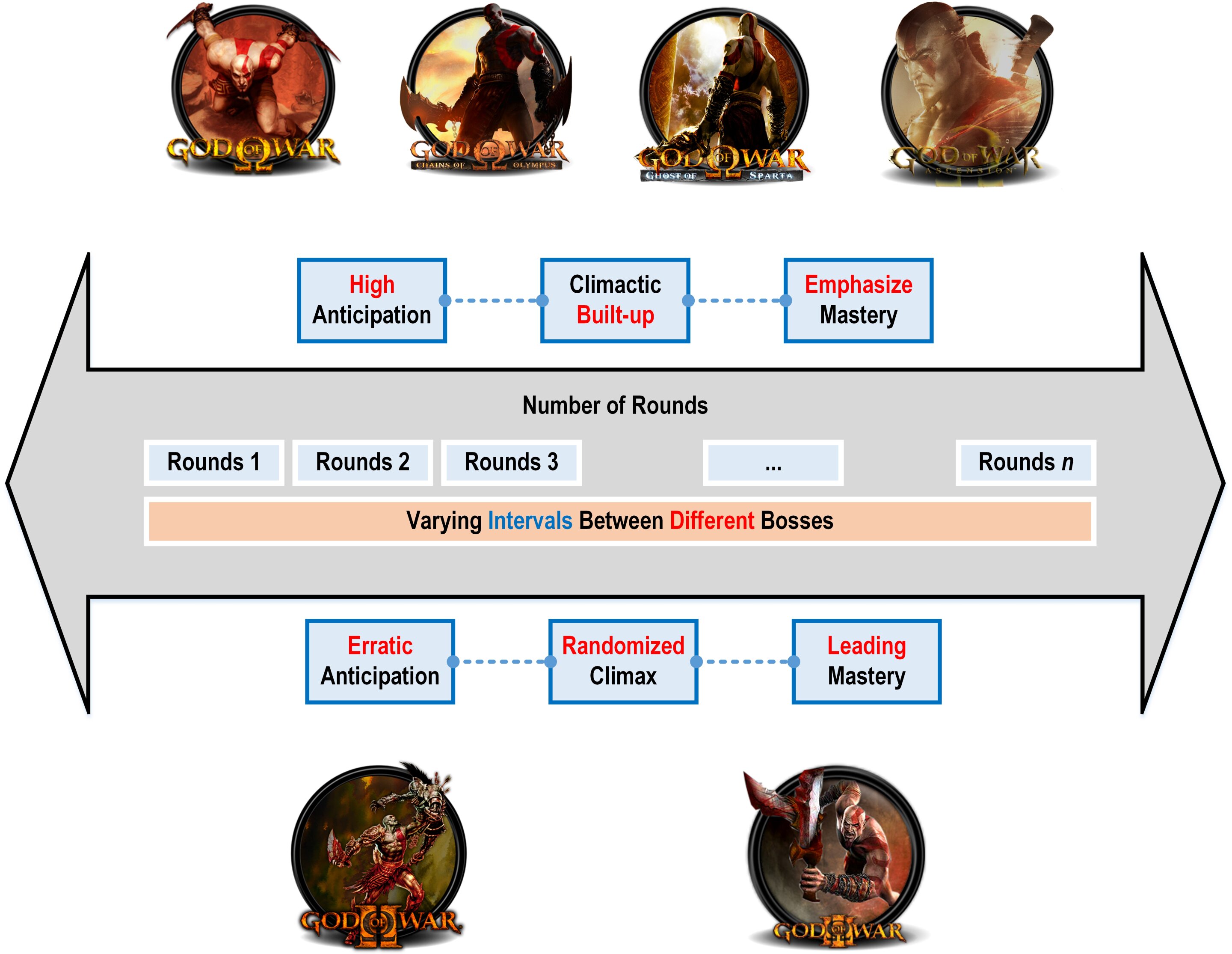A Journey Through Time: The Evolution Of Online Games From The 1990s To 2025
A Journey Through Time: The Evolution of Online Games from the 1990s to 2025
Related Articles: A Journey Through Time: The Evolution of Online Games from the 1990s to 2025
Introduction
With enthusiasm, let’s navigate through the intriguing topic related to A Journey Through Time: The Evolution of Online Games from the 1990s to 2025. Let’s weave interesting information and offer fresh perspectives to the readers.
Table of Content
A Journey Through Time: The Evolution of Online Games from the 1990s to 2025

The landscape of online gaming has undergone a dramatic transformation since its nascent beginnings in the 1990s. From text-based MUDs (Multi-User Dungeons) to the immersive, hyper-realistic worlds of today, the evolution has been marked by technological advancements, changing player demographics, and a continuous push for innovation. This journey, from the dial-up era to the age of virtual reality, offers a compelling glimpse into the power of digital entertainment to connect, engage, and inspire.
The Dawn of Online Gaming: The 1990s
The 1990s witnessed the birth of online gaming as we know it. Dial-up connections, though slow and unreliable, allowed players to connect and interact in virtual worlds. Text-based MUDs like "MUD1" and "Neverwinter Nights" paved the way, offering rudimentary role-playing experiences where players interacted through text commands. These early games fostered a sense of community, allowing players to forge bonds and collaborate in shared narratives.
The advent of graphical interfaces and faster internet speeds ushered in a new era. Games like "Doom" and "Quake" popularized first-person shooters, offering thrilling multiplayer experiences. The rise of massively multiplayer online role-playing games (MMORPGs) like "Ultima Online" and "EverQuest" solidified the foundations of the genre. These games featured vast persistent worlds, intricate character development systems, and a strong emphasis on social interaction.
The Rise of the Internet: The 2000s
The early 2000s saw a surge in internet accessibility and broadband connections, revolutionizing online gaming. The release of "World of Warcraft" in 2004 marked a turning point, becoming a cultural phenomenon and defining the future of MMORPGs. Its vast world, engaging gameplay, and robust social features captivated millions of players worldwide.
The decade also witnessed the emergence of e-sports, as competitive gaming gained traction. Games like "Counter-Strike" and "StarCraft" fostered professional leagues and tournaments, showcasing the skill and strategy of top players. Online gaming platforms like Steam and Origin emerged, offering a centralized hub for purchasing, downloading, and playing games.
The Mobile Revolution: The 2010s
The rise of smartphones and tablets ushered in the mobile gaming revolution. Games like "Angry Birds" and "Candy Crush Saga" dominated the market, attracting a wider audience with their casual gameplay and accessibility. Mobile gaming platforms like Apple’s App Store and Google Play Store provided a vast marketplace for developers to reach a global audience.
This decade also saw the rise of social gaming platforms like Facebook and Zynga, allowing players to connect with friends and compete in casual games. The emergence of free-to-play models, coupled with microtransactions, significantly changed the monetization landscape of online gaming.
The Age of Immersion: 2020s and Beyond
The 2020s have witnessed a continued evolution of online gaming, with a focus on immersive experiences and technological advancements. Virtual reality (VR) and augmented reality (AR) technologies are transforming the gaming landscape, offering players unprecedented levels of immersion. Games like "Half-Life: Alyx" and "Beat Saber" showcase the potential of VR to create engaging and interactive experiences.
The rise of cloud gaming services like Google Stadia and Xbox Cloud Gaming is further democratizing access to high-quality gaming experiences. These services allow players to stream games on various devices without requiring powerful hardware. The ongoing advancements in artificial intelligence (AI) are also influencing game development, leading to more realistic characters, dynamic environments, and intelligent opponents.
The Importance and Benefits of Online Games
Online games have become more than just entertainment; they have evolved into a powerful medium for social interaction, learning, and even therapy.
- Social Interaction and Community Building: Online games foster a sense of community, connecting players from diverse backgrounds and locations. Players collaborate, compete, and form lasting friendships within virtual worlds. This social aspect is particularly crucial for individuals seeking social connections or facing isolation.
- Cognitive Enhancement: Many online games demand strategic thinking, problem-solving, and quick decision-making, enhancing cognitive skills. Games like "StarCraft" and "Chess" require players to analyze situations, strategize, and adapt to changing circumstances.
- Learning and Skill Development: Educational games and simulations offer engaging ways to learn new skills or explore complex topics. Games like "Minecraft" and "Kerbal Space Program" encourage creativity, problem-solving, and critical thinking.
- Therapeutic Applications: Online games are increasingly used in therapeutic settings. Games designed to address specific mental health conditions, such as anxiety or depression, can provide a safe and engaging environment for patients to practice coping mechanisms and build resilience.
FAQs: A Closer Look at Online Games from the 1990s to 2025
1. What are the key technological advancements that have shaped the evolution of online games?
- Internet connectivity: The transition from dial-up to broadband and the widespread adoption of mobile internet have significantly impacted online gaming, allowing for faster speeds, smoother gameplay, and wider accessibility.
- Graphical processing units (GPUs): Advancements in GPU technology have enabled increasingly realistic graphics and complex environments, enhancing the immersive quality of online games.
- Virtual reality (VR) and augmented reality (AR): These technologies have opened up new possibilities for interactive experiences, allowing players to immerse themselves in virtual worlds and interact with their environment in unprecedented ways.
- Cloud gaming: Cloud gaming services have democratized access to high-quality gaming experiences, allowing players to stream games on various devices without requiring powerful hardware.
- Artificial intelligence (AI): AI advancements are being used to create more realistic characters, dynamic environments, and intelligent opponents, enhancing the depth and complexity of online games.
2. How have player demographics and preferences changed over time?
- Age and gender: Online gaming has become increasingly mainstream, attracting players of all ages and genders. The rise of mobile gaming has particularly broadened the audience, making games accessible to a wider demographic.
- Gaming preferences: Player preferences have evolved from simple text-based experiences to immersive, graphics-intensive games. The rise of e-sports has also fueled a demand for competitive games, attracting players seeking to test their skills against others.
- Social interaction: Players are increasingly seeking social experiences within online games, forming communities, collaborating with others, and engaging in shared narratives.
3. What are the major trends shaping the future of online games?
- Increased immersion: VR and AR technologies will continue to drive the development of more immersive and interactive experiences, blurring the lines between the virtual and real world.
- Cloud gaming: Cloud gaming services will continue to grow in popularity, providing a convenient and accessible way to enjoy high-quality gaming experiences on various devices.
- Artificial intelligence (AI): AI will play a more significant role in game development, creating more realistic characters, dynamic environments, and intelligent opponents.
- E-sports: E-sports will continue to grow in popularity, attracting a larger audience and generating more revenue.
- Cross-platform gaming: Games will become more accessible across different platforms, allowing players to connect and play together regardless of their device.
Tips for Engaging in Online Games
- Choose games that align with your interests: Explore different genres and find games that resonate with your preferences and skill level.
- Set realistic goals and expectations: Focus on enjoying the experience rather than chasing unrealistic achievements or rewards.
- Maintain a healthy balance: Limit your gaming time and ensure you prioritize other aspects of your life, such as work, relationships, and physical well-being.
- Be mindful of online safety: Protect your personal information and avoid sharing sensitive details with strangers.
- Embrace the social aspect: Connect with other players, join communities, and participate in collaborative gameplay.
Conclusion
The journey of online games from the 1990s to 2025 has been a testament to the power of technology and the human desire for connection, entertainment, and innovation. From text-based adventures to immersive virtual worlds, the evolution of online games has transformed the way we play, connect, and learn. As technology continues to advance, the future of online gaming promises even more immersive experiences, innovative gameplay, and a growing community of players united by their shared passion for the digital world.








Closure
Thus, we hope this article has provided valuable insights into A Journey Through Time: The Evolution of Online Games from the 1990s to 2025. We thank you for taking the time to read this article. See you in our next article!